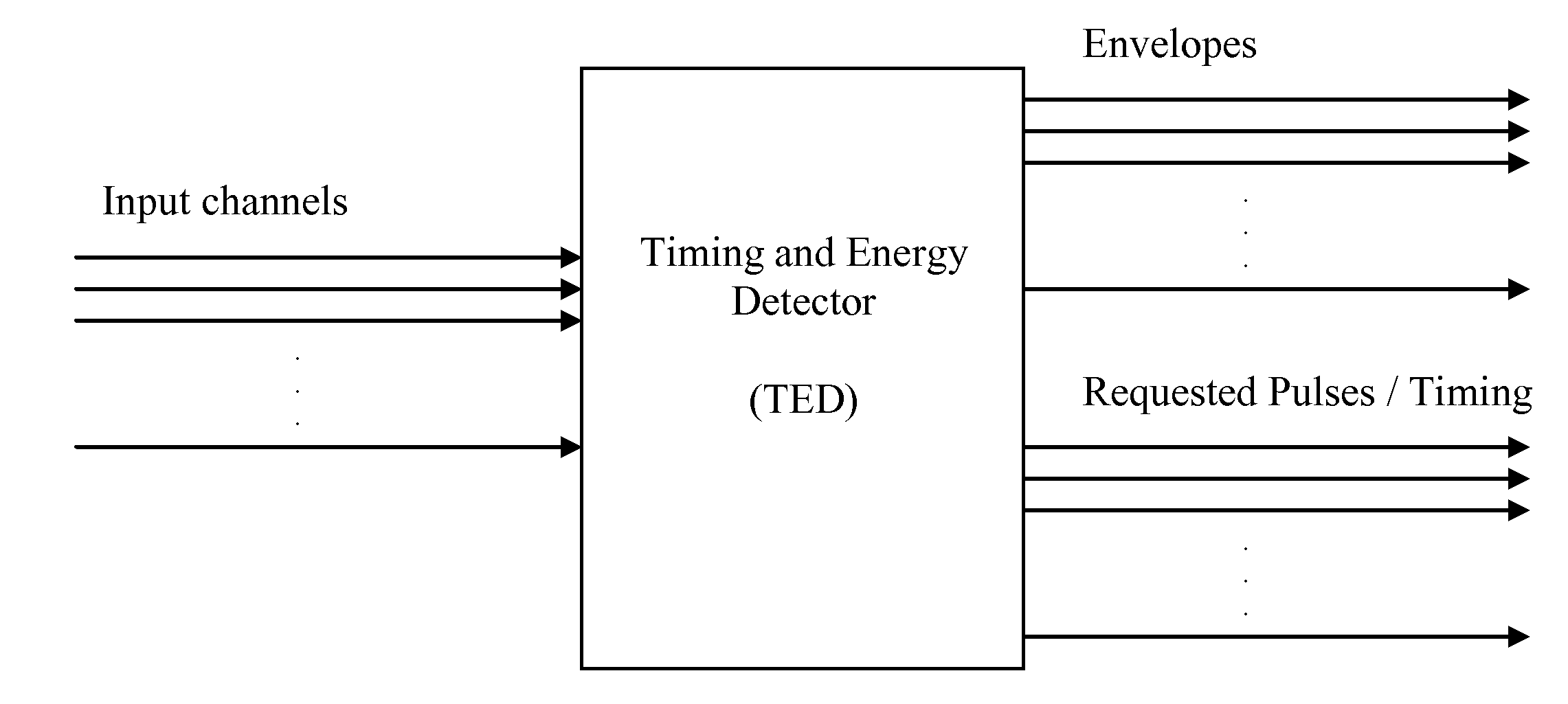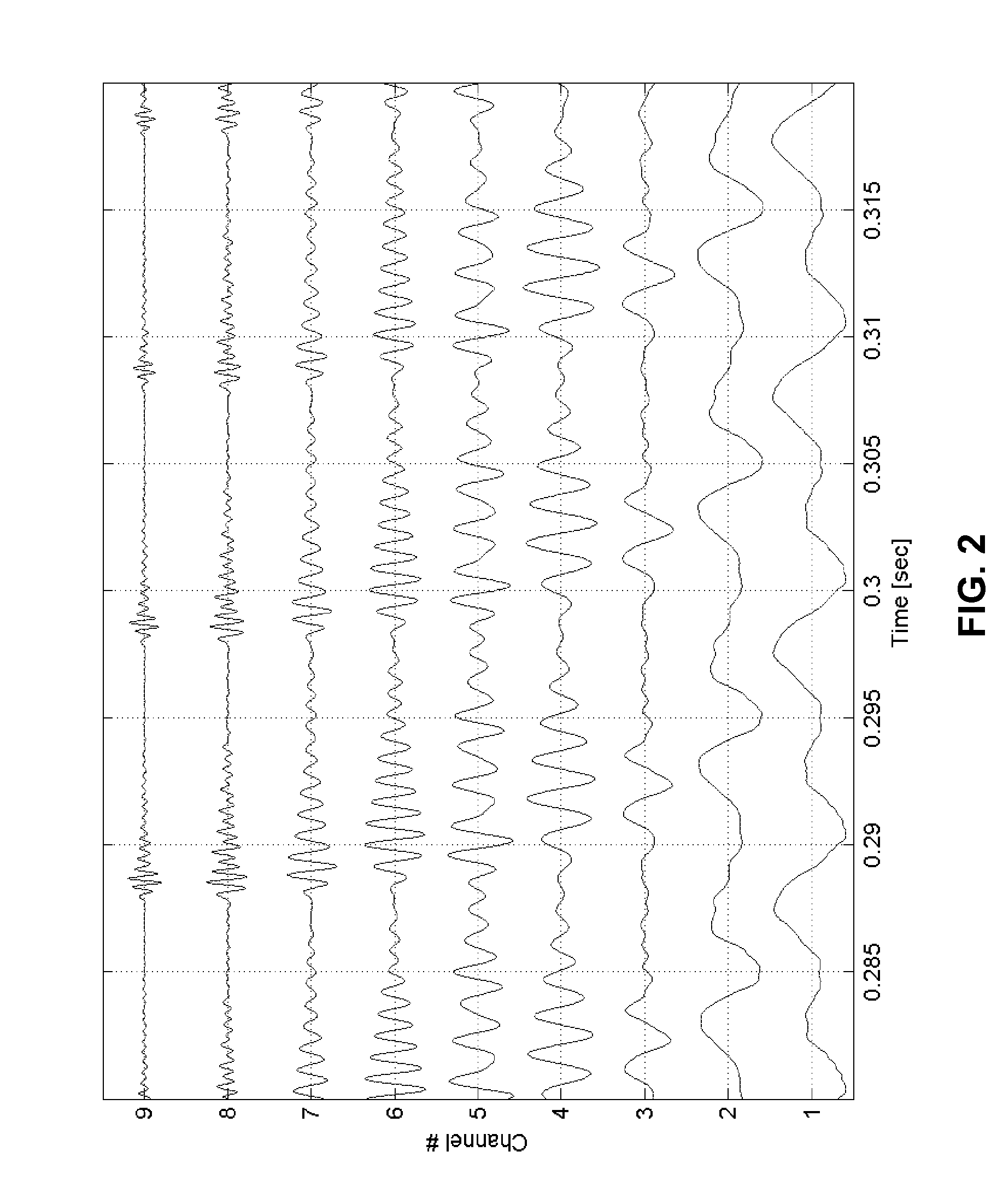Pulsatile cochlear implant stimulation strategy
a cochlear implant and pulse technology, applied in the field of pulse pulse coding technology, can solve the problems of loss of temporal information, lack of handling of interleaved pulses, etc., and achieve the effect of shortening the inhibition sta
- Summary
- Abstract
- Description
- Claims
- Application Information
AI Technical Summary
Benefits of technology
Problems solved by technology
Method used
Image
Examples
Embodiment Construction
[0023]Embodiments of the present invention are directed to a signal coding strategy for an implantable device having a multi-channel electrode array. The signal coding strategy encodes temporal characteristics of sound signals at a higher temporal accuracy and higher pulse durations than previously. Temporal fine structure is encoded and stimulation of refractor nerve populations can be inhibited by an inhibition function that determines whether or not stimulation pulses are delivered to one or more electrodes. Such signal coding is no longer based upon fixed stimulation rates and channel orders, and the encoding of the temporal fine structure is more accurate, even at long pulse durations.
[0024]FIG. 1 shows a typical sound signal in which the overall amplitude varies over a short period of time. Such a sound signal inherently contains specific timing information that characterizes the signal. The sound signal in this form as an audio electrical signal is typically pre-processed int...
PUM
 Login to View More
Login to View More Abstract
Description
Claims
Application Information
 Login to View More
Login to View More - R&D
- Intellectual Property
- Life Sciences
- Materials
- Tech Scout
- Unparalleled Data Quality
- Higher Quality Content
- 60% Fewer Hallucinations
Browse by: Latest US Patents, China's latest patents, Technical Efficacy Thesaurus, Application Domain, Technology Topic, Popular Technical Reports.
© 2025 PatSnap. All rights reserved.Legal|Privacy policy|Modern Slavery Act Transparency Statement|Sitemap|About US| Contact US: help@patsnap.com



